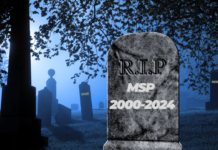Robots have come a long way since the intelligent tin cans on wheels of the mid-20th century. Today, robots assist handicapped people, build cars, perform microsurgery, clean rugs and perhaps one day will fight wars for humans. Why not provide entertainment?
“The idea is not to recreate Puccini or Wagner,” says Paul Minotto, composer and founder of the primeTime sublime Community Orchestra ( http://www.primetimesublime.com/ ), an alternative classical ensemble that uses computers and wears costumes during performances. “This will be a contemporary opera performed and sung by robots.”
Minotto read a story about Yoshii Tagu, a computer programmer and inventor in Tokyo, and his experiments with altering and extending the capabilities of commercially available robots such as AIBO, the robot dog made by Japan’s Sony Corporation.
“One of the robots Yoshii was working with was a Wakamaru, a household robot developed by the Mitsubishi Corporation. This robot can talk,” says Minotto. “I was beginning to work with voice synthesis software at the time and approached Yoshii with the possibility of making a Wakamaru or an AIBO sing.”
In the past, one of the problems of electronically simulated voices had to do with the synthetic quality of the voice — they sounded like robots. Recent developments in voice synthesis technology developed by AT&T and the Yamaha Corporation have changed all that.
“We are designing the robots for the purpose of singing and acting in response to human interaction or other robots,” says Minotto. “Getting them to sing is the easy part.”
While working out the details of using the singing software in the robots, Minotto and the primeTime sublime Community Orchestra recorded a new CD that features vocals sung entirely by a computer.
“Songs That Will Never Win A Grammy” is an eclectic mix of pop songs and sound bites with contributions by Richard Nixon, Hillary Clinton, both George Bushes and other celebrities. From the majestic opening of “Curb Your God,” which features seven different digital singers, to the crooner on “Rainbow Seeds of Mass Destruction,” the vocals sound as if made by human performers, not a machine.
“The singing on this CD is an example of what the operatic robots will sound like, but in a pop music context,” claims Minotto.
Robots entertaining humans is not a new idea. In 1992, Dr. Ingo Titze, Director of the National Center for Voice and Speech in Denver, and one of the world’s foremost vocal physicists, created a computerized model of Luciano Pavarotti’s voice.
Pavarobotti is a singing robot that has performed with Titze, an accomplished tenor, in presentations combining science with vocal music. More recently, Sony developed the SDR-4X, a human-shaped robot that can sing and dance. It is only 24 inches tall and costs as much as a luxury car.
But the logistics of creating robots that work together and with humans in an opera is something else.
“After we solve the problems of interaction, we have to deal with realism of character so that the robots have an identity, a personality,” says Minotto. “Maybe we should program the soprano robot with an inflated ego: a true prima donna.”












